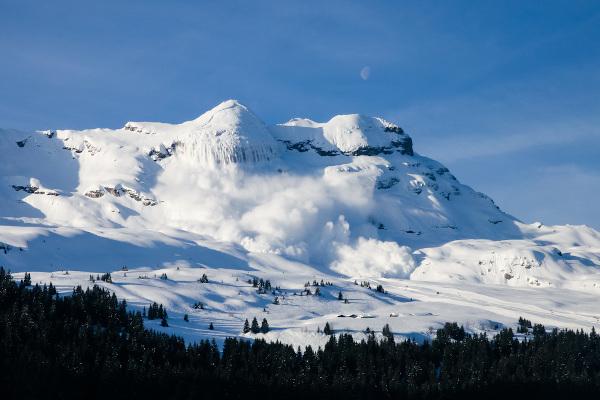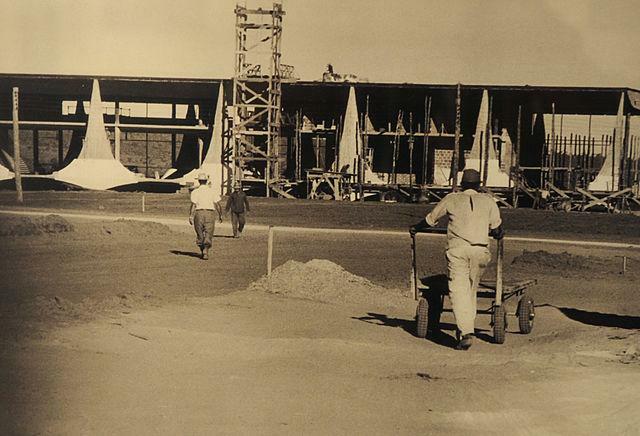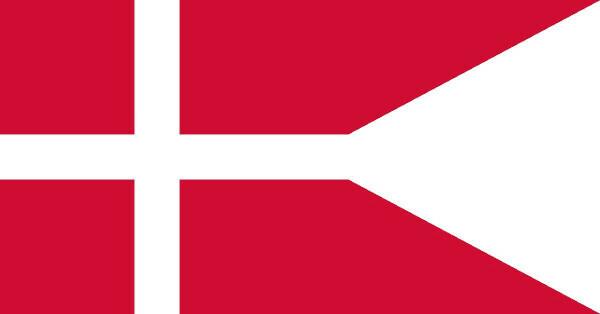Avalanche is a type of mass movement characterized by very rapid flows of materials over a slope, which flows are composed of fragments of rock, snow, ice or mud. Avalanches can be triggered by numerous factors, such as falling blocks of rock or ice, earthquakes, precipitation and intense winds or even by human activity. Large avalanches in inhabited areas cause the destruction of vegetation, properties and commercial establishments, in addition to causing injuries and death to people and animals.
Read too:Tsunamis — giant ocean waves that are, on average, 30 meters high
Topics of this article
- 1 - Summary about avalanche
- 2 - Causes of the avalanche
- 3 - Types of avalanche
- 4 - Flow of avalanches
- 5 - Consequences of the avalanche
- 6 - Prevention of avalanches
- 7 - 5 biggest avalanches in the world
summary about avalanche
Avalanche is a mass movement characterized by the rapid flow of debris, mud, snow or ice down a slope.
It is caused by several factors, such as earthquakes, the collapse of blocks of rock or ice, steep slopes, heavy rain, snowstorms, strong winds, weight on the ground or snow.
The flow of avalanches can reach speeds ranging from 100 km/h to values greater than 300 km/h, acquiring a high destructive potential.
In addition to changes in the landscape, avalanches result in the fall of trees and destruction of vegetation, the destruction of houses and properties and the death of people and animals.
To prevent these natural disasters, it is important to check the weather and weather alerts and never go alone to a risk area.
The worst avalanche in the world happened in 1970 on Huascarán Mountain in Peru. The village of Yungay was destroyed, and over 20,000 people died.
Causes of the avalanche

the avalanches happen when there is a disturbance in balance of soils, from the snow or the rocks that rest on one strand in an area steeply sloping, thus causing the rapid displacement of materials down the slope. This imbalance can be caused by internal (or endogenous) factors to planet Earth, such as the occurrence of earthquakes of great magnitude or small earthquakes, or external (or exogenous) factors and characteristics of the modeling itself, as:
very steep slopes of mountain slopes;
presence of too much water in the soil that exceeds the saturation point, which can happen after heavy rains;
occurrence of blizzards (snowstorms), heavy rain and strong winds;
melting of layers of snow in contact with the rock or surface, causing new layers deposited by the precipitation does not have adequate support (this factor has been accentuated in many locations with the increase in temperatures of the planet);
erosion of rocks caused by weathering agents, which increases the volume of disaggregated materials on a slope;
increase in the weight to be supported by the substrate, such as through human activity on the ground or on the snow, and other correlated factors.
Do not stop now... There's more after the publicity ;)
types of avalanche
Snow Avalanche: sliding of a mass of snow down the slope. It can be triggered naturally, by the increase in weight due to the accumulation of snow in a certain region of the slope or by human activity on the site.
Ice Avalanche: detachment and fall of one or more blocks of ice sliding down a slope. The force of the impact of the ice on the slope can trigger, in turn, a new mass movement composed of snow, rocks or mud.
Avalanche of rocks and debris: displacement of rock fragments and debris that are the product of weathering on the underlying rock. It also happens in areas where there is no snow or ice cover.
Submarine Avalanche: mainly caused by earthquakes, these are intense flows of rocks and underwater sediments known as turbidity currents. These currents flow towards underwater valleys and canyons. The largest underwater avalanches in the world occur in the Congo Canyon region, on the west coast of Africa.
flow of avalanches
Geomorphology studies on mass movements classify avalanches as the fastest and most intense flows of unconsolidated materials among the different known types. this flow it's composed by materials likemud, ice, snow and/or regolith, which corresponds to the product of weathering that acts on the rocks and that is loose — that is, unconsolidated — on a given rocky surface. The rock fragments are present in the regolith.
The avalanche flow increases in volume as it descends the steep slope through of addition of materials, at the same time that this set of rocks, ice and snow gains more and more speed until they collide with some barrier (natural or anthropic) or reach a lower and less inclined area of the relief.

The flow speed of avalanches can exceed 300 km/h, making this natural phenomenon of high risk for people who live close to areas susceptible to its occurrence, in addition to victimizing climbers and tourists who venture through the great icy mountains and mountain ranges.
consequences of the avalanche
Avalanches can happen isolated in nature, offering no risk to any form of life, and they only promote alterations in the local landscape, such as scars on the hill and on the slopes with the exposure of the rock underlying.
![Destruction caused by avalanche and heavy snowfall at Annapurna Sanctuary, Nepal. [1]](/f/73d4a4d5725955c9864ff5cfa92c47d1.jpg)
However, these mass movements also occur in inhabited areas and where there is intense anthropic activity, and which present still developed vegetation and different ecosystems installed, which causes them to be classified as disasters natural. In this case, avalanches generate a series of consequences for the inhabitants. Check out the main consequences of an avalanche below:
restriction on the movement of people and temporary closure of economic establishments and tourist enterprises, such as ski resorts and hotels;
transposition of vehicles, equipment and properties located on the slope;
economic and material damages with the destruction of properties and the flooding of low-lying areas with debris, ice and snow;
destruction of vegetation and death of animals that are in the path of the flow or that, in some way, are affected by the large volume of displaced materials;
injuries and even the death of people due to hypothermia, suffocation or through the impact of materials released by the intense flows of avalanches.
avalanche prevention
Avalanches are natural disasters with great destructive potential. The fact that we are in an area susceptible to avalanches makes it necessary to adopt preventive measures. See some of them below:
check the weather and the forecast for the next few hours, paying attention to the weather alerts that warn on sudden changes in the weather condition and the occurrence of phenomena such as snowstorms, intense winds and rains strong;
wear warm clothes to avoid hypothermia;
never go alone to a mountain or an area at risk of avalanches, in addition to letting other people know about the trip and the conditions of the place where you are going;
research the history of the site to identify previous avalanches and how they happened.
Important:In the case of being caught by a landslide of this size, it is recommended that the person always move horizontally, and not in the direction of the debris flow. In an extreme situation where there has been burial by snow, it is important to keep your mouth closed and your teeth clenched or clenched.
See too: Hurricanes — tropical storms that form over the ocean and also have great destructive potential
5 biggest avalanches in the world
![Workers clearing a road in Switzerland after a series of avalanches known as the Winter of Terror, 1951. [2]](/f/87600d588db50e7f5d78e483c531a499.jpg)
Huascarán avalanche, in the city of Yungay, Peru, in 1970: this avalanche happened on May 31, 1970 as a result of the Ancash earthquake, which scored 7.9 degrees on the Richter scale and lasted 45 seconds. The strong tremors triggered an intense flow of mud and debris in the mountain of Huascarán, responsible for the destruction of at least 12 small towns, including Yungay, causing the death of 22 One thousand people. This number refers only to the avalanche. It is estimated that both disasters caused approximately 30,000 deaths in total.
White Friday, on Mount Marmolada, Italy, in 1916: avalanche caused by intense snowfall that took place in the eastern portion of the Alps, in northern Italy, on December 13, 1916, in the midst of World War I conflicts. The disaster killed soldiers, mainly Austrians, and civilians, with estimates ranging between 2,000 and 10,000 lives lost.
Huascarán avalanche in Peru in 1962: Eight years before the deadliest avalanche in the world, a massive landslide occurred on Mount Huascarán on the 10th of January 1962 and caused the destruction of villages and farms in the region, causing severe damage to crops and the death of animals. An estimated 4,000 people died as a result of this avalanche.
Avalanches in Afghanistan in 2015: A series of avalanches occurred in the Panjshir region, in northeastern Afghanistan, on February 25, 2015. Triggered by heavy snowfall and storms, the avalanches destroyed homes and left thousands of people injured and homeless in several cities. At least 300 deaths were recorded.
Winter of Terror, in the Alps, between 1950 and 1951: a sequence of 649 avalanches took place in the Alps during the winter that lasted from late 1950 to early 1951, affecting areas in Austria, Switzerland and Italy. The period became known as the Winter of Terror and caused the deaths of 265 people, mostly Austrians. Crops and property were destroyed, and hundreds of livestock died in the process. The causes were large volumes of precipitation and unusual weather conditions.
image credits
[1] Boyloso / Shutterstock
[2] Wikimedia Commons (reproduction)
Sources
CASSETI, Walter. Geomorphology. [S.l.]: 2005.
CEMADEN. mass movement. National Center for Natural Disaster Monitoring and Alerts (CEMADEN), [n.d.]. Available in: http://www2.cemaden.gov.br/deslizamentos/.
D'COSTA, Lee-Anne. Deadliest Avalanches In History. World Atlas, 2023. Available in: https://www.worldatlas.com/natural-disasters/deadliest-avalanches-in-history.html.
GUERRA, Antonio Teixeira. Geological-geomorphological dictionary. Rio de Janeiro: IBGE, 1993. 8 ed.
HOWARD, Jenny. Avalanches, explained. National Geographic, 2019. Available in: https://www.nationalgeographic.com/environment/article/avalanches.
IFRC. avalanches. International Federation of Red Cross and Red Crescent Societies (IFRC), c2023. Available in: https://www.ifrc.org/our-work/disasters-climate-and-crises/what-disaster/avalanches.
NATIONAL GEOGRAPHIC. Encyclopedic entry: Avalanche. National Geographic – Education, c2023. Available in: https://education.nationalgeographic.org/resource/avalanche/.
RATIER, Rodrigo. How do avalanches occur? Super interesting, 2018. Available in: https://super.abril.com.br/mundo-estranho/como-ocorrem-as-avalanches-2.
By Paloma Guitarrara
Geography Teacher
Would you like to reference this text in a school or academic work? Look:
GUITARRA, Paloma. "Avalanche"; Brazil School. Available in: https://brasilescola.uol.com.br/geografia/avalanche.htm. Accessed on June 2, 2023.
Access our text and learn all about the Himalayas! Discover the characteristics of this mountain range. Find out where it is located and how it formed.
Read our text and find out about landslides. Understand its causes and consequences. Know some possible ways to avoid them.
Do you know where Mount Everest is? Discover this and other information here. Understand how Mount Everest formed and learn about the importance of this mountain.
Click and see how snow is formed, what types of snow there are. Understand what its effects are on people's daily lives and what consequences it brings.
Learn more about the rupture of the dam in Brumadinho, a terrible environmental disaster that occurred in Minas Gerais in 2019. Understand here the serious consequences of the dam rupture, such as the environmental problems resulting from the large avalanche of released tailings.


